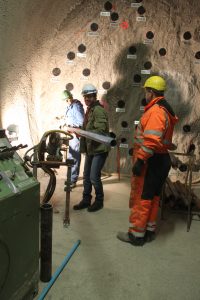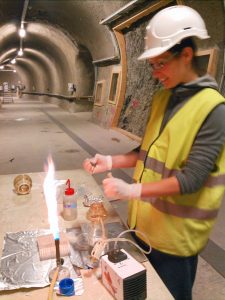 |
 |
|
The safe disposal of nuclear waste (low, intermediate and high level radiation) is a critical challenge to ensure the safety for future generations of humans as well for the biosphere in general. In Switzerland, the National Cooperative for the Disposal of Radioactive Waste (NAGRA) is in charge to meet this important task. The current concept uses a deep geological repository, located 600 meters (for low and intermediate radiation) and 700 meter (for high level radiation and spent fuel from nuclear power plants) below the surface within an Opalinus Clay rock formation, formed 180 million years ago.One aspect of our research is focused on the impact of bacterial metabolism on the safety of nuclear waste repositories. In more detail, we investigate the rate of consumption of gases that will be produced (in the case of high level waste) and the degradation of organic substances originating from the various types of waste (in the case of low and intermediate waste).In low and intermediate level waste, organic waste may be modified as a result of the radiolysis caused by the decay of radionuclides. We conduct in situ incubation experiments at the Mont Terri Underground Rock Laboratory to determine the impact of microbial activity on the long-term integrity of the repository. We apply chemical techniques to identify metabolites and perform metagenomic and metaproteomic analyses to exhaustively characterize how the microbial community may release or consume compounds of interest.The overall aim of our research is to provide a more detailed picture of the microbial influence in repositories and inform the design of engineered barriers in such a way, that the beneficial properties of the indigenous bacteria are exploited and their potential adverse effects avoided. For an audio information of our work (french). For a funny (but not less accurate) version of our work (english) watch below. People: Carla Pérez Mon (Ph.D. student), Niels Burzan (Ph.D. student) |
|